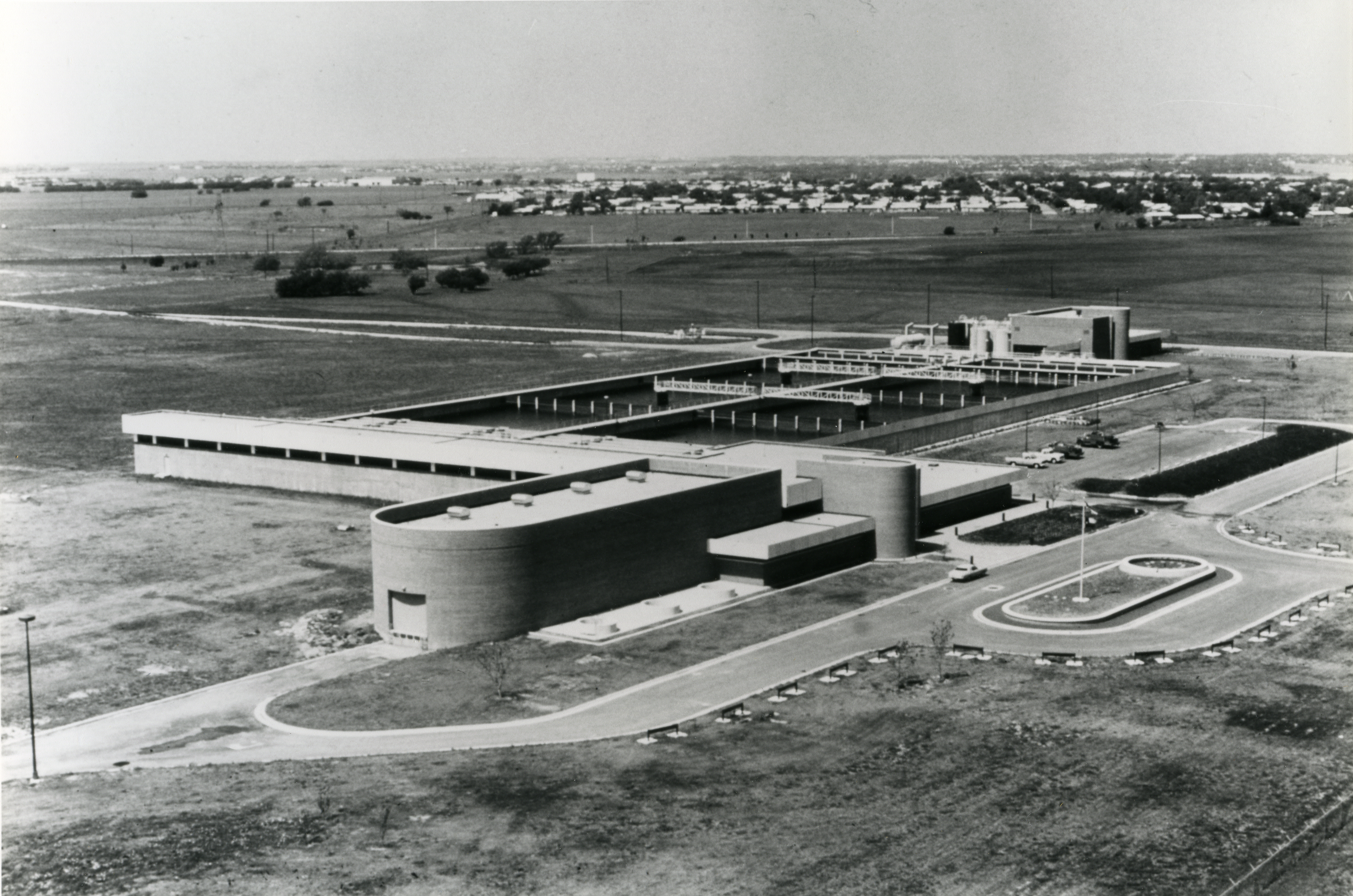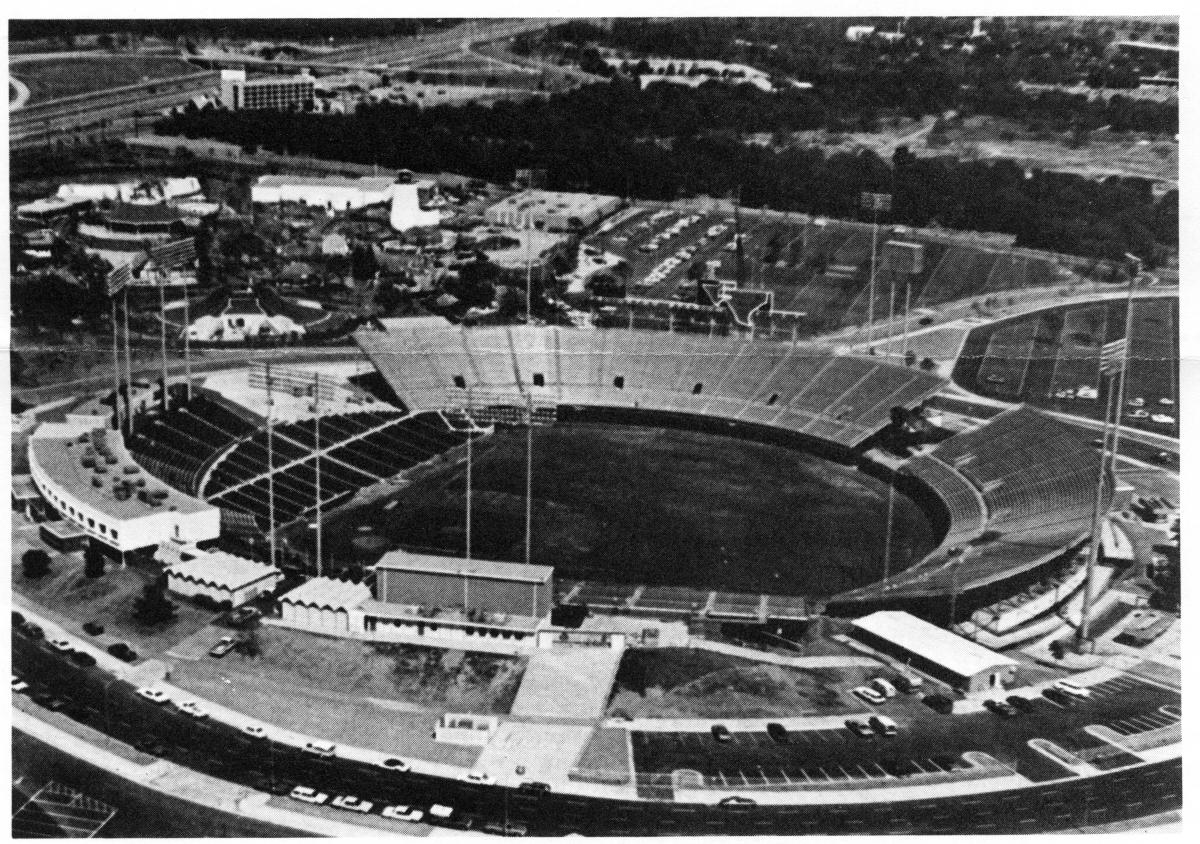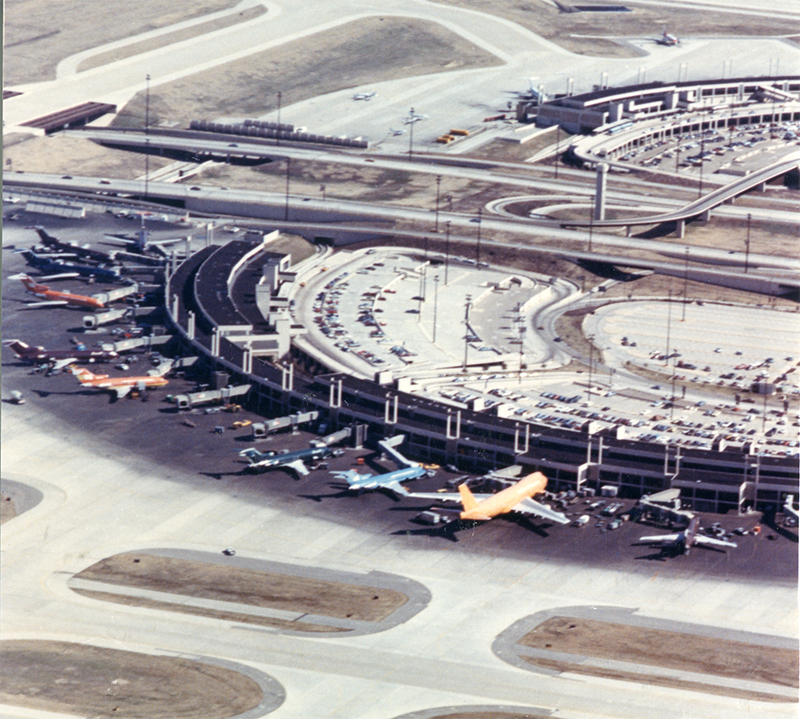The 1970s: A Growing Institution Focuses on Energy, Environment and Workplace Equality

![]()
Fort Worth Rolling Hills water treatment plant, 1972, receives water from Cedar Creek Reservoir, 74 miles away
As we celebrate Freese and Nichols’ 125th anniversary, this series will chronicle company achievements decade by decade. These posts are based on A Century in the Works, written by Deborah Sizemore and published in 1994.
The concern for the environment that arose in the 1960s continued into the next decade, encouraging federal, state, and local attention to waste treatment and water quality enhancement.
Enhancing Water Quality
Several governmental entities retained Freese, Nichols & Endress – as the firm was named at the time – to study pollution abatement and water quality improvement. Among the government entities that pollution reports were created for were Lower Colorado River Authority, Red River Authority of Texas, City of Austin, Texoma Regional Planning Commission, Lower Neches Valley Authority and Concho Valley Council of Governments. A study was also made for the North Central Texas Council of Governments, as a joint effort with another firm. Financed jointly by the Texas Water Quality Board and the Federal Water Quality Administration, the two-year, $600,000 study was completed in 1970. It provided a comprehensive review of sewerage and wastewater treatment needs in an 11,000-square-mile area on the upper Trinity River.
Rolling Hills
The centerpiece of the firm’s water work in the early 1970s was the new Rolling Hills Water Treatment Plant on the south side of Fort Worth and the 74 miles of 72- and 84-inch pipeline connecting the plant to Cedar Creek Reservoir. The project was a key part of the twenty-year plan for assuring Fort Worth an adequate municipal water supply. The $9.5 million treatment plant and $35.5 million pipeline, completed in two years, doubled the water supply of the Fort Worth-Arlington metropolitan area.
Freese and Nichols would later expand the original 80 MGD Rolling Hills plant to 160 MGD in 1986. In 1990, the plant would receive the statewide Public Water Supply Excellence Award from the Environmental Protection Agency. The award is based on quality of water produced, operations and maintenance practices administration and management, and customer relations.
Seven Seas and Arlington Stadium
Among the firm’s more unusual assignments of the 1970s were the Seven Seas sealife park and Arlington Stadium. Freese and Nichols assumed the role of construction managers and did all the purchasing, between $7 and $8 million worth. This was the only job designed by someone else on which the firm acted as construction managers.
“Arlington is a good client of ours and our philosophy is that we will do whatever our client needs done provided we can stay within our fields of competence,” recalled Bob Nichols.

The Arlington city manager was impressed with our field man on the project that he asked us to release him to work for the City on converting its minor league ball park into a home for the Texas Rangers – before the sealife park was finished.
“When I protested, he offered an alternative: ‘Why don’t you keep the man and you build the stadium?’ My comment that we had never built a stadium before brought the retort that eight months before we had never built a sealife park either.”
Seven seas housed exotic fish, elephant seals and a dozen trained dolphins in more than 2.5 million gallons of manufactured salt and fresh water. It opened to the public in March 1972. Arlington Stadium opened the same year; read more in Then and Now: Arlington Stadium and MoneyGram Park.
A Growing Institution
What began as an individual practice, by 1972 the firm had a staff of 130 registered professional engineers, surveyors, draftsmen, technicians, inspectors and support personnel. Besides the Fort Worth headquarters and branch office in Austin, the firm had an affiliate in Odessa, Texas.
Building on founder Major Hawley’s original specialties of water, sewerage, and flood protection, his successors had developed a well-rounded municipal and civil practice that included roads, bridges, airports, water and waste systems, dams, reservoirs, flood control and drainage, watershed management and comprehensive city planning. The firm also did all mechanical, electrical and structural engineering in-house. It ranked 151st among the nation’s top design firms in 1972, as compiled by Engineering News-Record (ENR).
Freese, Nichols & Endress operated as an association of seven partners, each with his own client group and areas of specialization: Jim Nichols in water supply, water treatment and airports; Bob Nichols in water quality management and pollution abatement; Lee Freese in water transmission; Bob Gooch in computer operations and feasibility studies; Joe Paul Jones in planning and federal projects including military installations; Gardner Endress in water resources and wastewater treatment; and Simon Freese in water supply, sewage treatment and flood control.

The World’s Largest Airport
Among Freese and Nichols’ most prominent projects of the 1970s was Dallas/Fort Worth International Airport, which was the largest airport in the world when it opened in 1974. A Freese and Nichols joint venture oversaw more than $50 million in infrastructure work at the mammoth airport – the equivalent of about $300 million in today’s dollars.
Read more about our work there: Then and Now: DFW International Airport
Adding the “Inc.”
After operating as a partnership for most of the firm’s history, Freese and Nichols incorporated in 1977 with Simon Freese chairman of the board and James Nichols president. Robert Nichols and Lee Freese became vice presidents, Robert Gooch vice president and treasurer, and Joe Paul Jones vice president and secretary. The new corporation needed all the experience of its predecessors’ 83 years to negotiate the shifting business and social terrain of the late 1970s.
The three “E’s” – energy, environment and employment equality – imposed significant change at home and work. Conserving energy, preserving the environment and promoting equality in hiring practices ranked high on the nation’s agenda.
The firm attended to all three “E’s.” On the energy and environmental front, work included many projects for the military. Dedication to the third “E,” equal employment, was shown through the firm’s employment policy, which stated equal employment opportunities with no regard to race, color, religion, sex, age or national origin.
See Also:


